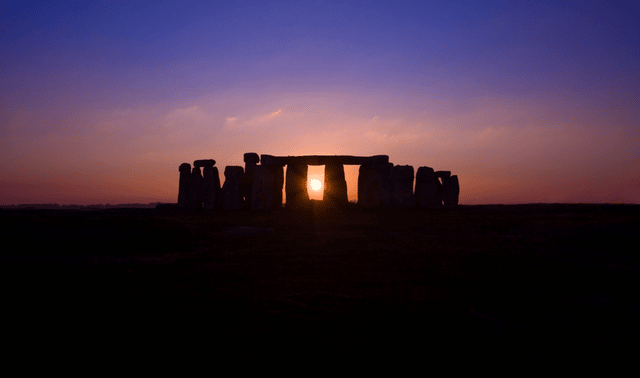What our ancestors didn’t know about the heavens could fill a book — and did, many times over, with fanciful notions about gods and other celestial beings, complex schemes of spheres to contain the stars, and, most crucially wrong, the idea that the sun revolves around the earth. That all began to change 400 years ago with the invention of the telescope.
But the telescope had ramifications beyond an improved understanding of astronomy. As it says on the Rice University’s Galileo Project website: “The telescope was one of the central instruments of what has been called the Scientific Revolution of the 17th century. It was the first extension of one of man’s senses, and demonstrated that ordinary observers could see things that the great Aristotle had not dreamed of. It therefore helped shift authority in the observation of nature from men to instruments. In short, it was the prototype of modem scientific instruments.”
In particular, of course, the telescope began to shift the balance of the debate between the geocentric view and Copernicus’ heliocentric theory. By moving earth — and humankind — from the center to merely another planet orbiting the sun, the telescope began a long process of taking humanity down a peg or two, which would continue with Charles Darwin.
Despite its pivotal role in the Scientific Revolution, the telescope wasn’t invented by scientists. The Galileo Project points out that it was “the product of craftsmen.” For that reason, much of its origin is inaccessible to us since craftsmen were by and large illiterate and therefore historically often invisible.”
Nor was the telescope invented by Galileo Galilei (1564-1642), despite the invention’s popular association with the great Italian scientist. At least three Dutch craftsmen have claims to assembling the first telescope in 1608, a year before Galileo put one to use discovering the moon’s craters and four moons of Jupiter.
But these inventors were simply building on glassmaking technology that dates to at least the 13th century. That’s when magnifying glasses were first used to compensate for aging eyes’ declining ability to focus close up. Since holding a magnifying glass occupied one hand — cumbersome when writing — Venetian glassmakers tried using the nose instead. They created small glass disks that could be worn in pairs in a frame; the disks came to be called lenses, from the Latin for “lentils of glass.” The earliest illustrations of spectacles date from about 1350.
Not for some 250 years would the idea of combining two opposite types of lenses to see distant objects occur, almost simultaneously, to Dutch spectacle makers. A convex (or converging) lens, thicker in the center than at the edges, causes light rays to refract inward to a single focal point, thereby correcting farsightedness. In 1450, glassmakers realized that by making a lens thicker at the edges than at the center, light could be refracted outward; this concave (or diverging) lens could fix nearsightedness. Combine a convex and concave lens in a tube and you had a gadget “by means of which all things at a very great distance can be seen as if they were nearby.”
The Telescope Evolves
That earliest written description of a telescope, dated Sept. 25, 1608, is found on a letter from the provincial government of Zeeland, in the Netherlands, directing the Dutch States General to assist a spectacle maker named Hans Lipperhey. Born in Germany, Lipperhey had settled in Middelburg, the capital of Zeeland, and become a Dutch citizen in 1602. The States General debated Lipperhey’s patent application Oct. 2, 1608. The legislators couldn’t quite understand why his telescope design used only one eye, and asked Lipperhey to craft a double version — making him also the inventor of binoculars.
Although Lipperhey was handsomely rewarded, his patent application was ultimately denied because the design was too simple and couldn’t be kept secret. Indeed, soon after, another Dutch craftsman, Jacob Metius of Alkmaar, petitioned the States General, claiming to be the telescope’s inventor. A third inventor, Sacharius Janssen, also a Middleburg spectacle maker, apparently developed a telescope about the same time but missed the patent battle because he was busy trying to sell it at a fair in Frankfurt, Germany.
Simple to construct, telescopes caught on quickly, and by April 1609 were for sale at shops on the Pont Neuf in Paris. That summer, Galileo crafted his own telescope, capable of magnifying distant objects three times. He first focused a 20-power telescope on the heavens in the fall of 1609, publishing his findings in Siderus Nuncius in March 1610.
But Galileo soon came to the attention of the Inquisition, which would ultimately place him under house arrest for the rest of his life. By the time of his death in 1642, ironically, Galileo was completely blind and unable to peer through his telescopes. They had shown him irrefutably, however, that the earth moves around the sun and not the other way around. “Eppur si muove!” Galileo legendarily muttered when forced to recant in 1633 — “and yet it moves!”
Websites and Resources
Peer further into the history of telescopes and stargazing at these websites, museums and observatories:
1878 Robinson Road, Dahlonega, GA 30533
• Cincinnati Observatory Center National Historic Landmark
3489 Observatory Place, Cincinnati, OH 45208, (513) 321-5186
•Kitt Peak National Observatory
State Route 386, Pima County, AZ 85634, (520) 318-8726
1400 W. Mars Hill Road, Flagstaff, AZ 86001, (928) 774-3358
Box 1909, Atlanta, GA 30301, (404) 413-5484, <www.mtwilson.edu>
• National Air and Space Museum Explore the Universe Exhibit
Independence Avenue and Fourth Street Southwest, Washington, DC 20560, (202) 633-1000
Box 200, Palomar Mountain, CA 92060, (760) 742-2111
373 W. Geneva St., Williams Bay, WI 53191, (262) 245-5555
From the March 2008 issue of Family Tree Magazine.









